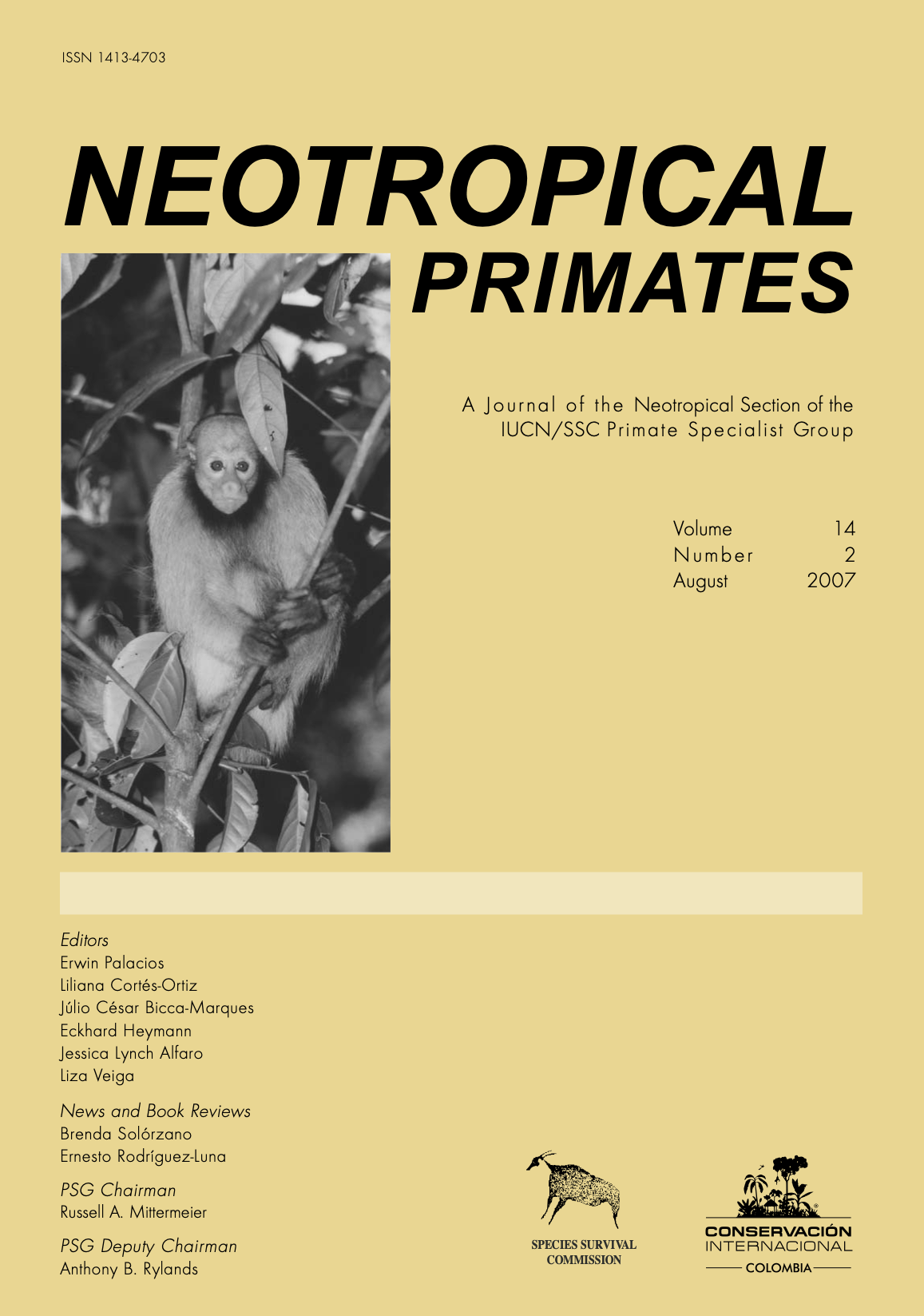Further notes on the distribution of endemic Bolivian titi monkeys, Callicebus modestus and Callicebus olallae
DOI:
https://doi.org/10.1896/044.014.0201Keywords:
Geographical range, group size, physical characteristics, Southwestern Beni Department, BoliviaAbstract
We present information on the distribution of the endemic Bolivian primates Callicebus olallae and C. modestus based on a series of site visits in the Beni Department. Callicebus olallae was registered at four localities and C. modestus at 11 localities, and in combination with negative data and localities for other Callicebus species in the region we defined the distributional boundaries for both endemics. Mean group size was 2.7 individuals for C. olallae and 3 individuals for C. modestus. The results highlight the restricted distribution of both species, with C. olallae having one of the highest levels of primate endemism in the world and an “occurrence area” of 400 km2, and considering forest fragmentation in the region, more realistically an “occupancy area” of 50 km2. Although C. modestus is found in slightly larger areas (1,800 km2 and 450 km2 respectively) the distribution area is still extremely restricted. The restricted distributions together with ongoing forest fragmentation due to cattle ranching, unregulated ecotourism activities, and principally the scheduled improvement of the “Northern Corridor” road that passes through this region, means that both species should be considered highly endangered.
Downloads
Published
Issue
Section
License

This work is licensed under a Creative Commons Attribution-NonCommercial-ShareAlike 4.0 International License.



